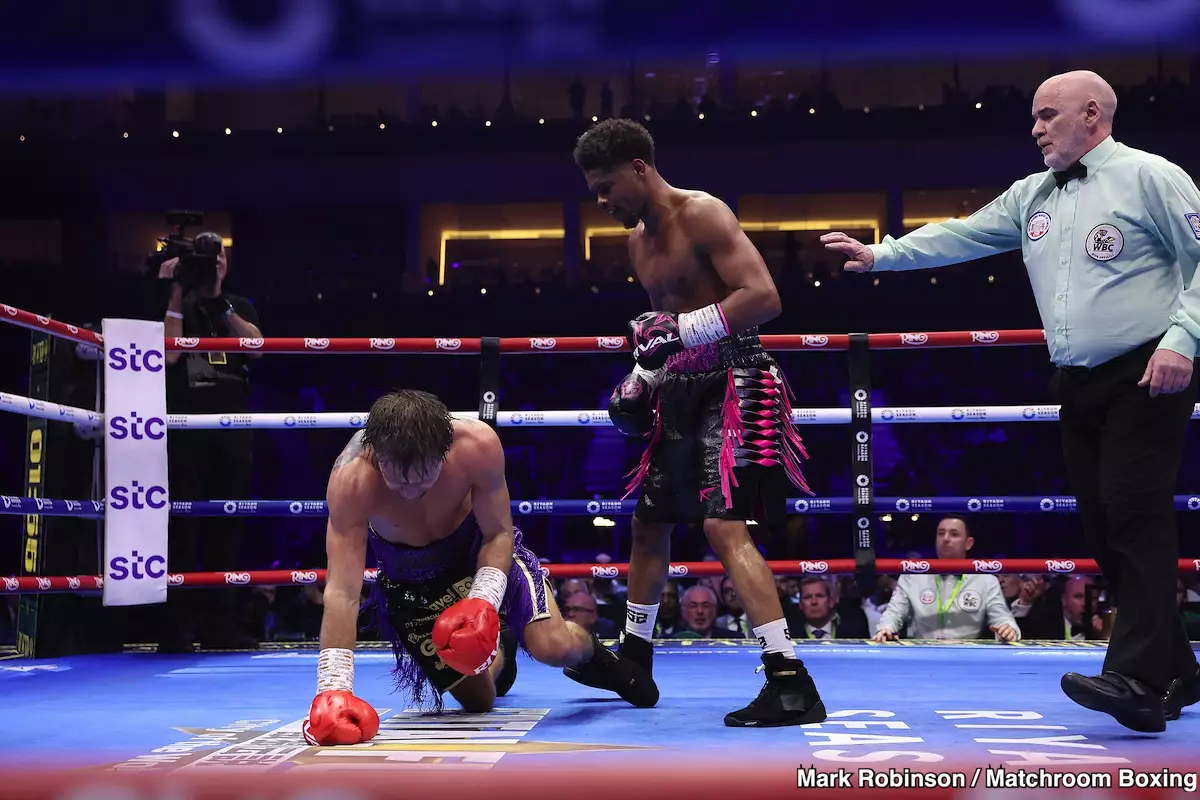In the realm of professional boxing, few topics ignite as much debate as potential matchups between elite fighters. Recent comments by Rolando “Rolly” Romero regarding a potential fight between Gervonta “Tank” Davis and Shakur Stevenson provide a lens through which to examine both fighters’ styles, their past performances, and the broader implications for the sport. Romero, known for his candid and often brash remarks, poses the intriguing question: is a showdown with Stevenson worth Davis’s time, or is it fraught with complexities that make it less appealing?
Romero’s critical viewpoint centers on his belief that Stevenson is more inclined to evade than engage in aggressive exchanges. After Stevenson’s recent bout against Edwin De Los Santos, where he demonstrated a penchant for movement rather than assertive striking, Romero posits that Stevenson might employ a similar strategy against Davis. “He might jump out of the ring,” he warns, implying that Stevenson’s approach could default to avoiding confrontation rather than participating in an exciting bout. This analysis positions Stevenson not just as a technical fighter but as one who prioritizes self-preservation, which could frustrate audiences thirsty for action.
Romero’s argument hinges on the broader narrative surrounding Stevenson’s recent fights. Despite having technical prowess, his recent performance against Josh Padley saw him securing a victory only in the ninth round, raising questions about his ability to secure decisive results against power-punching adversaries. Moreover, Romero’s disdain for Stevenson’s perceived lack of knockout power—”his hands who can’t even crack an egg”—challenges the viability of a fight that might otherwise promise little in terms of entertainment or impact.
On the other hand, the promotion and logistics of a Romero vs. Davis fight are equally pivotal. With Davis holding an impressive record of 30 wins and 28 knockouts, there is a natural intrigue about how he would engage with a fighter like Stevenson, who is currently the WBC lightweight champion. However, Romero accurately places weight on financial incentives as a fundamental driver for Davis. He suggests that unless Davis is offered substantial compensation, it would be inexpedient for him to chase Stevenson around the ring—a scenario fans would likely greet with dissatisfaction.
Eddie Hearn, a prominent promoter, hints that matchmaking could still be feasible, but this assertion remains speculative. The difference between anticipation and actuality in high-profile matches frequently hinges on monetary backing, promotional strategies, and, crucially, the fighters’ willingness to participate in bouts that may not align with their personal styles or career trajectories.
While Romero’s criticisms are sharp, they highlight an important dichotomy in boxing: the balance between technical ability and knockout artistry. He acknowledges Stevenson as a “masterpiece” in the ring, recognizing his technical skills and strategic prowess. This dichotomy raises necessary questions about the essence of boxing: should all fights aim for knockout finishes or are tactical victories equally valid?
Romero’s comments reflect a desire for Stevenson’s potential to be unleashed, as he believes that if he were to demonstrate greater knockout capability—“If Shakur can get three knockouts straight”—Fan interest might pivot favorably toward a bout with Davis. He hints at a frustration within boxing entertainment dynamics, emphasizing that while technical brilliance exists, the ultimate goal should be enthralling bouts that leave fans craving more.
Ultimately, while Romero’s critique serves a purpose—encouraging Stevenson to embrace his knockout potential—it also encapsulates the challenges facing contemporary boxing. Promoters, fighters, and fans must navigate the thin line between art and spectacle. For Gervonta Davis, the path forward involves careful consideration of fights framed around public interest and personal legacy.
As boxing continues to evolve, understanding the nuances of fighter styles, matchmaking economics, and audience expectations will be paramount. Romero’s comments may serve as a catalyst for change, motivating Stevenson to push beyond technical mastery into more combative territories—where excitement reigns supreme. Whether or not Stevenson and Davis ever square off, the discourse surrounding their potential fight reflects ongoing thematic tensions within the sport that suggest fans demand not just skill, but the thrill of true competition.


Leave a Reply